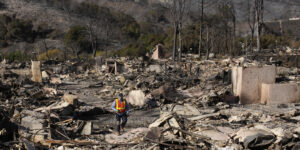Homeowner insurers reacting to a growing industry problem, being referred to as “neighbor-itis,” has carriers reducing coverage in some regions, actuaries reported recently.
Speaking at the Casualty Actuarial Society Annual Meeting held in November during a session on “Emerging Homeowners and Personal Auto Exposures,” actuaries identified examined an emerging phenomenon—one in which they say hailstorms and storm chasing contractors are fueling a demand for new roofs from homeowners.
“Homeowner envy” has become a problem in the industry, the CAS said in a statement about the session, noting that hailstorms have pelted the Midwest in recent years. Damages have sprinkled replacement roofs throughout affected neighborhoods. Seeing the new roofs, neighbors want their insurers to get them new roofs also when the next storm hits.
Dialing up the volume on this envy are storm chasers—not the daredevils who stalk tornadoes with video cameras, but residential contractors who pursue homeowners after a storm, urging them to file claims alleging roof damage.
Many claims are legitimate, of course. But some aren’t, and their numbers seem to be increasing, the CAS account reports.
In some cases, insurers are minimizing price changes by reducing coverage.
These insurers will only pay for the actual cash value of the damaged roof instead of replacement cost, said panelist Robert Curry, a Fellow of the Casualty Actuarial Society and assistant vice president and actuary at ISO’s personal property actuarial division.
And some insurers are raising deductibles, said panelist Kevin Christy, a Fellow of the Casualty Actuarial Society and chief actuary at Western National Insurance Group. A deductible needs to increase over time so the homeowner has “the same skin in the game,” noted Christy.
In yet another approach, insurers are trying to find ways to verify the actual age of a roof. Municipal building departments hold those records, but insurers have yet to figure out how to electronically tap that information.
The session also covered more positive trends impacting homeowners underwriting and pricing, such as the use of the latest predictive modeling techniques and the possibility that telematics devices in homes will reduce future claims.
Source: Casualty Actuarial Society




















 P/C Insurance Market Profitability Expected to Continue Through 2026
P/C Insurance Market Profitability Expected to Continue Through 2026  The Road Ahead: Top Insurance Trends Shaping 2025
The Road Ahead: Top Insurance Trends Shaping 2025  ‘Underwriting Choices’ Added to Everest’s Social Inflation Woes: CEO
‘Underwriting Choices’ Added to Everest’s Social Inflation Woes: CEO  Allstate, Arity Legal Troubles Mount; Class Action Filings Allege Privacy Violations
Allstate, Arity Legal Troubles Mount; Class Action Filings Allege Privacy Violations 


